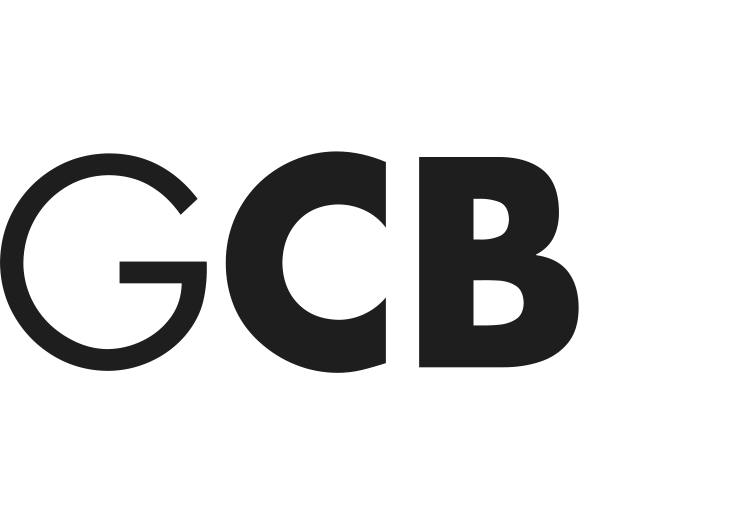GCB Kunstlexikon
EDWARD „ED“ RUSCHA
VIDEO / FILM
Ed Ruscha | The Tension of Words and Images | TateShots | Tate Gallery | https://www.tate.org.uk/ | Ed Ruscha began his career as a layout artist at a Los Angeles advertising agency in the late 1950s. He has continued to draw on this background, producing works that demonstrate an ongoing interest in typography, signage and the West Coast of the United States. His creates paintings in which text is superimposed over landscapes and traditional American vistas, where the bold lettering is in complete opposition to the idyllic, idealised and somewhat kitsch representations of the images. Through this playful and characteristically enigmatic conflation of image and text, Ruscha explores the viewer’s interpretation of language and transforms the words into subjects in themselves | YouTube
Ed Ruscha Interview | Words Have No Size | Louisiana Channel | The road to being an artist was “like blind leading the blind” says Ed Ruscha, who grew to be one of the most recognised American artists of the 20th century. Hear the story of West Coast Jazz, his break with abstract art and L.A. in the 1960s. When Ed Ruscha entered the Los Angeles art scene in the 1960s the city was buzzing with progressive jazz and the prevailing method of making art was abstract expressionism. But the intuitive style did not fit Ruscha’s temperament: “I had to preconceive ideas that I would put into a picture.” The big creative breakthrough came when the artist stepped away from abstraction and began working with recognisable objects, particularly words. “Words were not tied to any particular size,” Ruscha explains. “If you see a picture of an apple you know its size, but a word has no size.” The use of everyday objects and words was general for the generation of Pop Artists with which Ruscha has often been grouped. The young artists of the era found abstract expressionism and minimalism exhausted. “These genres had been so well stated that it would be difficult to state anything more. It was a natural evolution to move in different directions,” says Ruscha. “I’m one of those artists who saw that common objects had more appeal to me than throwing paint at a canvas.” | Ed Ruscha (b. 1937) is an American painter, photographer and filmmaker. Considered a central figure in post-war American art, his work has been the subject of retrospective New York, Washington, D.C., London, Paris, and Munich and was elected to the American Academy of Arts and Letters in 2001 | Ed Ruscha was interviewed by Marc-Christoph Wagner at his studio in Los Angeles | USA | January 2016 | Camera Jakob Solbakken | Edited by Klaus Elmer | Produced by Marc-Christoph Wagner | Copyright Louisiana Channel | Louisiana Museum for Modern Art | https://www.louisiana.dk/en | YouTube
Ed Ruscha | Interview | A Long Way from Oklahoma | Louisiana Channel | “I began to see gas stations as necessary stopovers.” Ed Ruscha stands out as one of the most prominent figures of 20th century American art. In this video, the 80-year-old artist, who has interpreted American society in the past five decades, shares the story behind his iconic paintings of the Hollywood sign, as well as the trip from Oklahoma to L.A. that came to define his influential artist books. “The flatness of all the landscape between Oklahoma and California began to affect my work, and I could see it coming at me.” In his hometown Oklahoma, Ruscha had a friend who lived in a small concrete block house, which resembled a gas station. This sparked his initial fascination with gas stations, and when he at the age of 18 went on a road trip from Oklahoma to California, he took pictures – snapshots – of the gas stations on the way, which made him feel somewhat like a reporter, recording, collecting and producing “a series of facts.” Later, when he worked for a printer, Ruscha saw his pictures as a sort of travelogue, and because he wanted to make a book, the photographs became his excuse to do so. This turned into ‘Twenty-six Gasoline Stations’, and as the challenging medium made him realize that he didn’t want “to abandon this creature that I brought to the world,” it paved the way for all his following artist books. Arriving in Los Angeles, Ruscha feels that it had an most narcotic effect on him, and he considered the city a new frontier. He could see the Hollywood sign from his studio and used it as a kind of “weather indicator,” its clarity determining the density of the smog in the city. When he started making images of it, he could see it as another form of a gas station, with the same shape and “visual push.” Moreover, Hollywood’s “cultural indicator” attracted him: “It’s a loaded kind of thing today, people have seen that word so much that you almost forget where it came from, and it just seemed to have an obvious kind of flavour to it that appealed to me.” Ed Ruscha (b. 1937) is an American painter, photographer and filmmaker, who is considered a central figure in post-war American art. Ruscha is closely associated with cool and elegant representations of stylized gas stations, Hollywood logos and archetypal landscapes – accompanied by his wry choice of words and phrases. Ruscha has also created some of the first and most important artist books in history, typically featuring repetitive photographs of commonplace subjects. Solo exhibitions include prominent venues such as the Whitney Museum of American Art in New York, Museum of Contemporary Art in Los Angeles, MAXXI in Rome, Haus der Kunst in Munich, Moderna Museet in Stockholm and Tate Modern in London. In 2005 Ruscha represented the 51st Biennale di Venezia, and in 2001 he was elected to the American Academy of Arts and Letters | He lives and works in Los Angeles | Ed Ruscha was interviewed by Kasper Bech Dyg at the Louisiana Museum of Modern Art in Humlebæk, Denmark in June 2018 in connection with the exhibition „VERY“ | Camera Jakob Solbakken and Klaus Elmer | Produced and edited by Kasper Bech Dyg | Cover photo Detail from „Hollywood“ 1968 by Ed Ruscha | Copyright Louisiana Channel | Louisiana Museum for Modern Art | 2018 | YouTube
WIKIPEDIA
EDWARD „ED“ RUSCHA
VIDEO / FILM
Ed Ruscha | The Tension of Words and Images | TateShots | Tate Gallery | https://www.tate.org.uk/ | Ed Ruscha began his career as a layout artist at a Los Angeles advertising agency in the late 1950s. He has continued to draw on this background, producing works that demonstrate an ongoing interest in typography, signage and the West Coast of the United States. His creates paintings in which text is superimposed over landscapes and traditional American vistas, where the bold lettering is in complete opposition to the idyllic, idealised and somewhat kitsch representations of the images. Through this playful and characteristically enigmatic conflation of image and text, Ruscha explores the viewer’s interpretation of language and transforms the words into subjects in themselves | YouTube
Ed Ruscha Interview | Words Have No Size | Louisiana Channel | The road to being an artist was “like blind leading the blind” says Ed Ruscha, who grew to be one of the most recognised American artists of the 20th century. Hear the story of West Coast Jazz, his break with abstract art and L.A. in the 1960s. When Ed Ruscha entered the Los Angeles art scene in the 1960s the city was buzzing with progressive jazz and the prevailing method of making art was abstract expressionism. But the intuitive style did not fit Ruscha’s temperament: “I had to preconceive ideas that I would put into a picture.” The big creative breakthrough came when the artist stepped away from abstraction and began working with recognisable objects, particularly words. “Words were not tied to any particular size,” Ruscha explains. “If you see a picture of an apple you know its size, but a word has no size.” The use of everyday objects and words was general for the generation of Pop Artists with which Ruscha has often been grouped. The young artists of the era found abstract expressionism and minimalism exhausted. “These genres had been so well stated that it would be difficult to state anything more. It was a natural evolution to move in different directions,” says Ruscha. “I’m one of those artists who saw that common objects had more appeal to me than throwing paint at a canvas.” | Ed Ruscha (b. 1937) is an American painter, photographer and filmmaker. Considered a central figure in post-war American art, his work has been the subject of retrospective New York, Washington, D.C., London, Paris, and Munich and was elected to the American Academy of Arts and Letters in 2001 | Ed Ruscha was interviewed by Marc-Christoph Wagner at his studio in Los Angeles | USA | January 2016 | Camera Jakob Solbakken | Edited by Klaus Elmer | Produced by Marc-Christoph Wagner | Copyright Louisiana Channel | Louisiana Museum for Modern Art | https://www.louisiana.dk/en | YouTube
Ed Ruscha | Interview | A Long Way from Oklahoma | Louisiana Channel | “I began to see gas stations as necessary stopovers.” Ed Ruscha stands out as one of the most prominent figures of 20th century American art. In this video, the 80-year-old artist, who has interpreted American society in the past five decades, shares the story behind his iconic paintings of the Hollywood sign, as well as the trip from Oklahoma to L.A. that came to define his influential artist books. “The flatness of all the landscape between Oklahoma and California began to affect my work, and I could see it coming at me.” In his hometown Oklahoma, Ruscha had a friend who lived in a small concrete block house, which resembled a gas station. This sparked his initial fascination with gas stations, and when he at the age of 18 went on a road trip from Oklahoma to California, he took pictures – snapshots – of the gas stations on the way, which made him feel somewhat like a reporter, recording, collecting and producing “a series of facts.” Later, when he worked for a printer, Ruscha saw his pictures as a sort of travelogue, and because he wanted to make a book, the photographs became his excuse to do so. This turned into ‘Twenty-six Gasoline Stations’, and as the challenging medium made him realize that he didn’t want “to abandon this creature that I brought to the world,” it paved the way for all his following artist books. Arriving in Los Angeles, Ruscha feels that it had an most narcotic effect on him, and he considered the city a new frontier. He could see the Hollywood sign from his studio and used it as a kind of “weather indicator,” its clarity determining the density of the smog in the city. When he started making images of it, he could see it as another form of a gas station, with the same shape and “visual push.” Moreover, Hollywood’s “cultural indicator” attracted him: “It’s a loaded kind of thing today, people have seen that word so much that you almost forget where it came from, and it just seemed to have an obvious kind of flavour to it that appealed to me.” Ed Ruscha (b. 1937) is an American painter, photographer and filmmaker, who is considered a central figure in post-war American art. Ruscha is closely associated with cool and elegant representations of stylized gas stations, Hollywood logos and archetypal landscapes – accompanied by his wry choice of words and phrases. Ruscha has also created some of the first and most important artist books in history, typically featuring repetitive photographs of commonplace subjects. Solo exhibitions include prominent venues such as the Whitney Museum of American Art in New York, Museum of Contemporary Art in Los Angeles, MAXXI in Rome, Haus der Kunst in Munich, Moderna Museet in Stockholm and Tate Modern in London. In 2005 Ruscha represented the 51st Biennale di Venezia, and in 2001 he was elected to the American Academy of Arts and Letters | He lives and works in Los Angeles | Ed Ruscha was interviewed by Kasper Bech Dyg at the Louisiana Museum of Modern Art in Humlebæk, Denmark in June 2018 in connection with the exhibition „VERY“ | Camera Jakob Solbakken and Klaus Elmer | Produced and edited by Kasper Bech Dyg | Cover photo Detail from „Hollywood“ 1968 by Ed Ruscha | Copyright Louisiana Channel | Louisiana Museum for Modern Art | 2018 | YouTube
WIKIPEDIA
EDWARD „ED“ RUSCHA
VIDEO / FILM
Ed Ruscha | The Tension of Words and Images | TateShots | Tate Gallery | https://www.tate.org.uk/ | Ed Ruscha began his career as a layout artist at a Los Angeles advertising agency in the late 1950s. He has continued to draw on this background, producing works that demonstrate an ongoing interest in typography, signage and the West Coast of the United States. His creates paintings in which text is superimposed over landscapes and traditional American vistas, where the bold lettering is in complete opposition to the idyllic, idealised and somewhat kitsch representations of the images. Through this playful and characteristically enigmatic conflation of image and text, Ruscha explores the viewer’s interpretation of language and transforms the words into subjects in themselves | YouTube
Ed Ruscha Interview | Words Have No Size | Louisiana Channel | The road to being an artist was “like blind leading the blind” says Ed Ruscha, who grew to be one of the most recognised American artists of the 20th century. Hear the story of West Coast Jazz, his break with abstract art and L.A. in the 1960s. When Ed Ruscha entered the Los Angeles art scene in the 1960s the city was buzzing with progressive jazz and the prevailing method of making art was abstract expressionism. But the intuitive style did not fit Ruscha’s temperament: “I had to preconceive ideas that I would put into a picture.” The big creative breakthrough came when the artist stepped away from abstraction and began working with recognisable objects, particularly words. “Words were not tied to any particular size,” Ruscha explains. “If you see a picture of an apple you know its size, but a word has no size.” The use of everyday objects and words was general for the generation of Pop Artists with which Ruscha has often been grouped. The young artists of the era found abstract expressionism and minimalism exhausted. “These genres had been so well stated that it would be difficult to state anything more. It was a natural evolution to move in different directions,” says Ruscha. “I’m one of those artists who saw that common objects had more appeal to me than throwing paint at a canvas.” | Ed Ruscha (b. 1937) is an American painter, photographer and filmmaker. Considered a central figure in post-war American art, his work has been the subject of retrospective New York, Washington, D.C., London, Paris, and Munich and was elected to the American Academy of Arts and Letters in 2001 | Ed Ruscha was interviewed by Marc-Christoph Wagner at his studio in Los Angeles | USA | January 2016 | Camera Jakob Solbakken | Edited by Klaus Elmer | Produced by Marc-Christoph Wagner | Copyright Louisiana Channel | Louisiana Museum for Modern Art | https://www.louisiana.dk/en | YouTube
Ed Ruscha | Interview | A Long Way from Oklahoma | Louisiana Channel | “I began to see gas stations as necessary stopovers.” Ed Ruscha stands out as one of the most prominent figures of 20th century American art. In this video, the 80-year-old artist, who has interpreted American society in the past five decades, shares the story behind his iconic paintings of the Hollywood sign, as well as the trip from Oklahoma to L.A. that came to define his influential artist books. “The flatness of all the landscape between Oklahoma and California began to affect my work, and I could see it coming at me.” In his hometown Oklahoma, Ruscha had a friend who lived in a small concrete block house, which resembled a gas station. This sparked his initial fascination with gas stations, and when he at the age of 18 went on a road trip from Oklahoma to California, he took pictures – snapshots – of the gas stations on the way, which made him feel somewhat like a reporter, recording, collecting and producing “a series of facts.” Later, when he worked for a printer, Ruscha saw his pictures as a sort of travelogue, and because he wanted to make a book, the photographs became his excuse to do so. This turned into ‘Twenty-six Gasoline Stations’, and as the challenging medium made him realize that he didn’t want “to abandon this creature that I brought to the world,” it paved the way for all his following artist books. Arriving in Los Angeles, Ruscha feels that it had an most narcotic effect on him, and he considered the city a new frontier. He could see the Hollywood sign from his studio and used it as a kind of “weather indicator,” its clarity determining the density of the smog in the city. When he started making images of it, he could see it as another form of a gas station, with the same shape and “visual push.” Moreover, Hollywood’s “cultural indicator” attracted him: “It’s a loaded kind of thing today, people have seen that word so much that you almost forget where it came from, and it just seemed to have an obvious kind of flavour to it that appealed to me.” Ed Ruscha (b. 1937) is an American painter, photographer and filmmaker, who is considered a central figure in post-war American art. Ruscha is closely associated with cool and elegant representations of stylized gas stations, Hollywood logos and archetypal landscapes – accompanied by his wry choice of words and phrases. Ruscha has also created some of the first and most important artist books in history, typically featuring repetitive photographs of commonplace subjects. Solo exhibitions include prominent venues such as the Whitney Museum of American Art in New York, Museum of Contemporary Art in Los Angeles, MAXXI in Rome, Haus der Kunst in Munich, Moderna Museet in Stockholm and Tate Modern in London. In 2005 Ruscha represented the 51st Biennale di Venezia, and in 2001 he was elected to the American Academy of Arts and Letters | He lives and works in Los Angeles | Ed Ruscha was interviewed by Kasper Bech Dyg at the Louisiana Museum of Modern Art in Humlebæk, Denmark in June 2018 in connection with the exhibition „VERY“ | Camera Jakob Solbakken and Klaus Elmer | Produced and edited by Kasper Bech Dyg | Cover photo Detail from „Hollywood“ 1968 by Ed Ruscha | Copyright Louisiana Channel | Louisiana Museum for Modern Art | 2018 | YouTube



